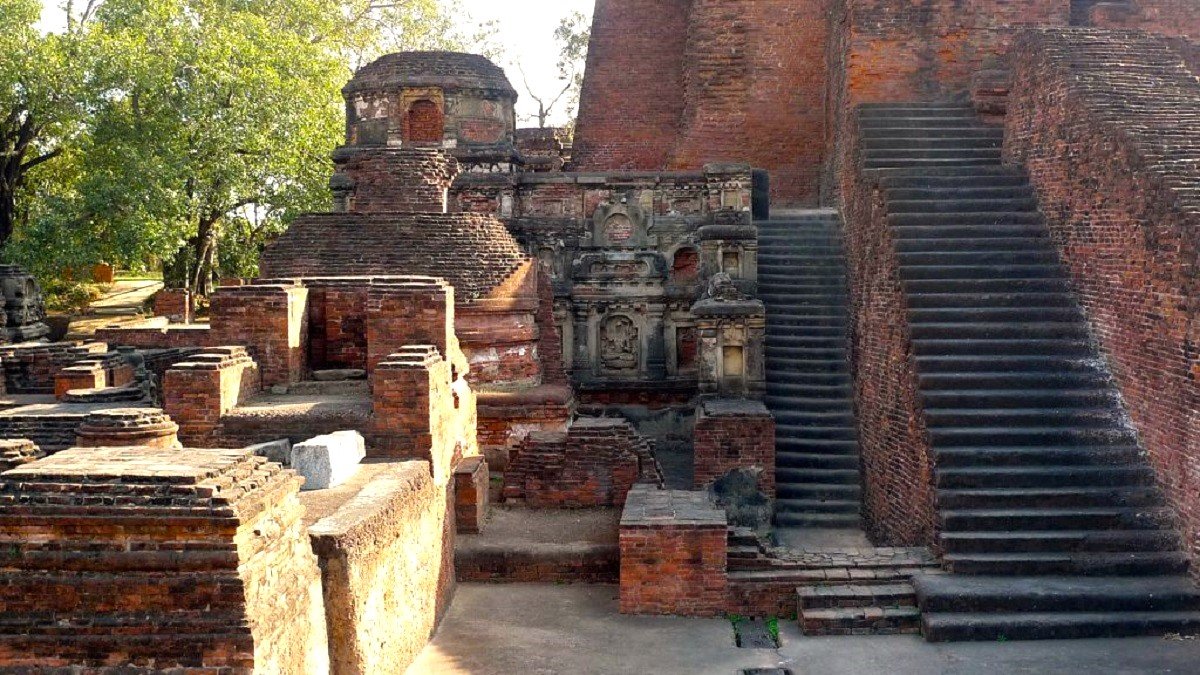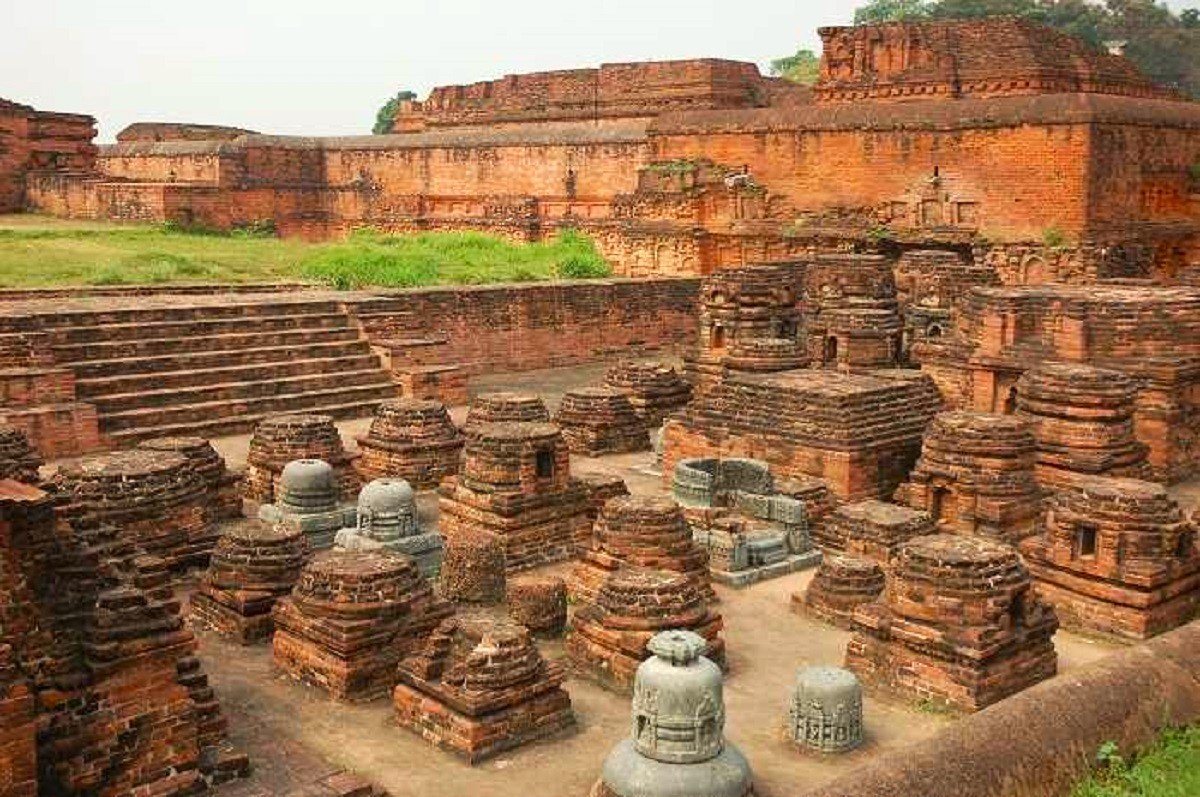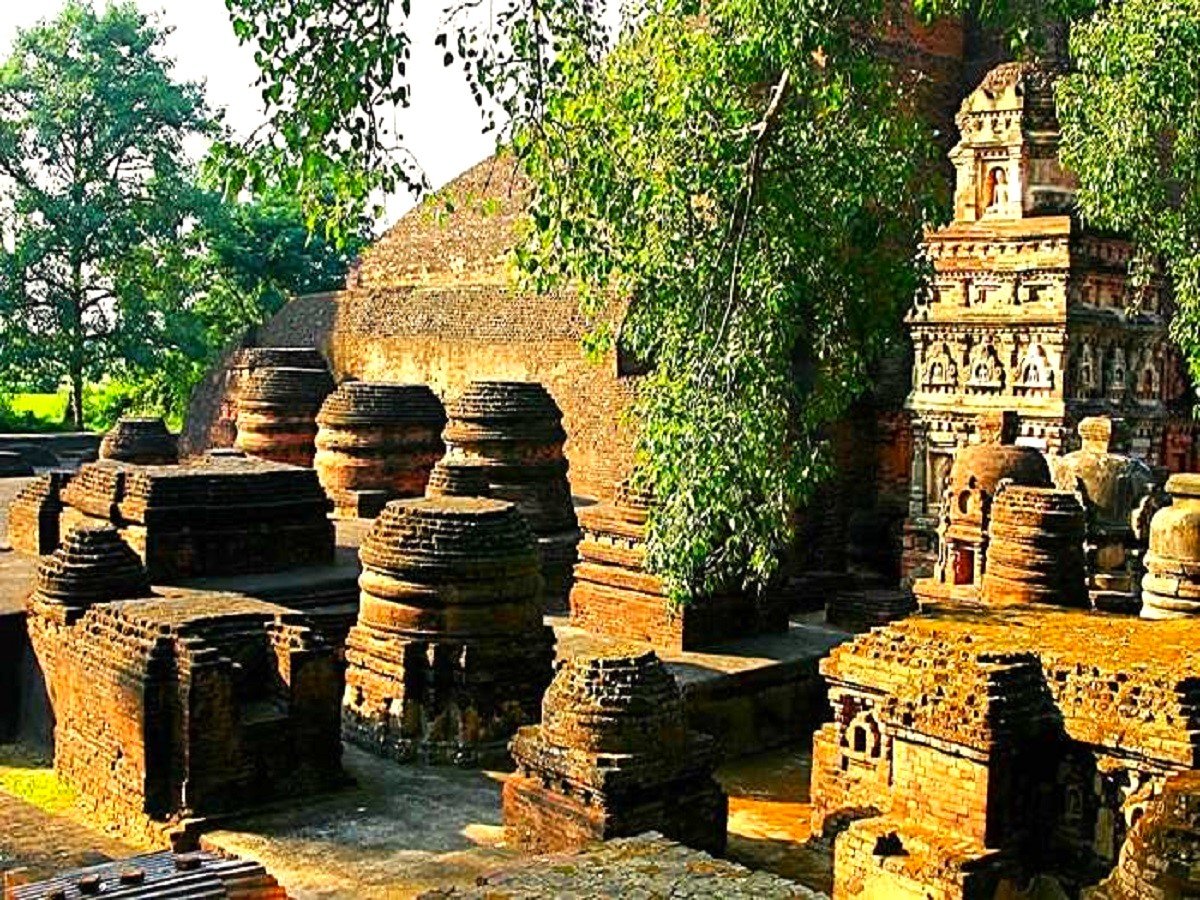A truly international university of knowledge and learning, supported by member states of East Asia Summit, and with collaborative research linkages with reputed global universities & institutions
For some 700 years, between the 5th and 12th centuries, it remained a premium centre for imparting scholarly knowledge and learning to the ancient world, attracting students and renowned teachers from across Eastern and Central Asia, including the famous pilgrim-monk Hsuan Tsang from China in the 7th century.
Widely believed to be the world’s first residential university, Nalanda, in the erstwhile kingdom of Magadha (modern day Bihar), had a sprawling campus scattered over several villages.
Though devoted to Buddhist studies, it also trained students in a variety of scholarly pursuit, including theology (study of religion and religious beliefs), philosophy, logic, literature, linguistics, fine arts, science, astronomy, mathematics, economics, architecture, medicine, politics, the art of war, etc. The world’s first encyclopaedias in these subjects were said to have been created here.
At its peak, the residential university, known to stock some 9 million hand-written palm-leaf manuscripts in its imposing nine-storey library, attracted over 10,000 students and 2,000 scholarly faculty from across Eastern and Central Asia.
It was largely on the strength of such centres of knowledge and learning that ‘Bharatvarsha’, as India was known in ancient times, could stamp its authority as the ‘Vishva Guru’ or the global teacher.
Advertisement

 It existed from 427 CE till about 1197, when the university, already in decline on account of various reasons, primary among them being lack of patronage by successive royalties, was completely gutted by a marauding Turkish invader called Bakhtiyar Khilji.
It existed from 427 CE till about 1197, when the university, already in decline on account of various reasons, primary among them being lack of patronage by successive royalties, was completely gutted by a marauding Turkish invader called Bakhtiyar Khilji.
Close to its archaeological remains, declared USESCO World Heritage Site, has come up a resurrected modern day Nalanda University with the support and voluntary contributions of nearly a score of countries from the Indo-Pacific, and beyond, including host state India, Japan, South Korea, China, Cambodia, Vietnam, Indonesia, Thailand, Singapore, Australia, New Zealand, United States, etc, who as members states of the East Asia Summit signed an inter-governmental agreement in support of the establishment of the university .
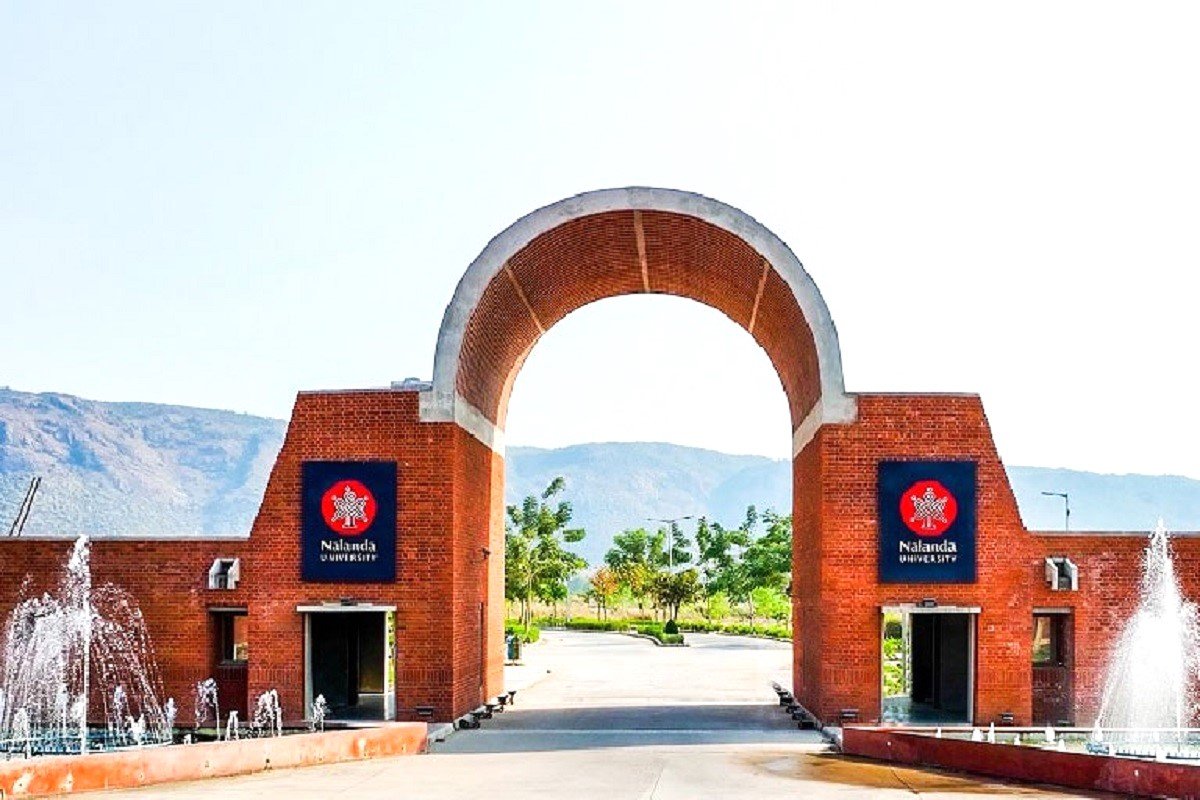 The sprawling 455 acres net-zero new campus (among the world’s first campuses to acquire this status), bounded by 8.3 kms wall, with 100 acres of water bodies, was formally inaugurated by Prime Minister Narendra Modi recently in the presence of ambassadors of these countries to India and the international students and faculty.
The sprawling 455 acres net-zero new campus (among the world’s first campuses to acquire this status), bounded by 8.3 kms wall, with 100 acres of water bodies, was formally inaugurated by Prime Minister Narendra Modi recently in the presence of ambassadors of these countries to India and the international students and faculty.
While upholding the philosophy, principles and some of the design elements of the ancient university, and reviving and revitalising the scholarship in academic disciplines, the new age international university also seeks to achieve global excellence in education and research in modern day disciplines.
Various schools & programmes
 The university, which enrolled its first batch of students in 2014 from a temporary campus, is currently offering programmes in the School of Historical Studies, the School of Ecology and Environment Studies, the School of Buddhist Studies, Philosophy and Comparative Religions, the School of Languages and Literature/Humanities, and the School of Management Studies.
The university, which enrolled its first batch of students in 2014 from a temporary campus, is currently offering programmes in the School of Historical Studies, the School of Ecology and Environment Studies, the School of Buddhist Studies, Philosophy and Comparative Religions, the School of Languages and Literature/Humanities, and the School of Management Studies.
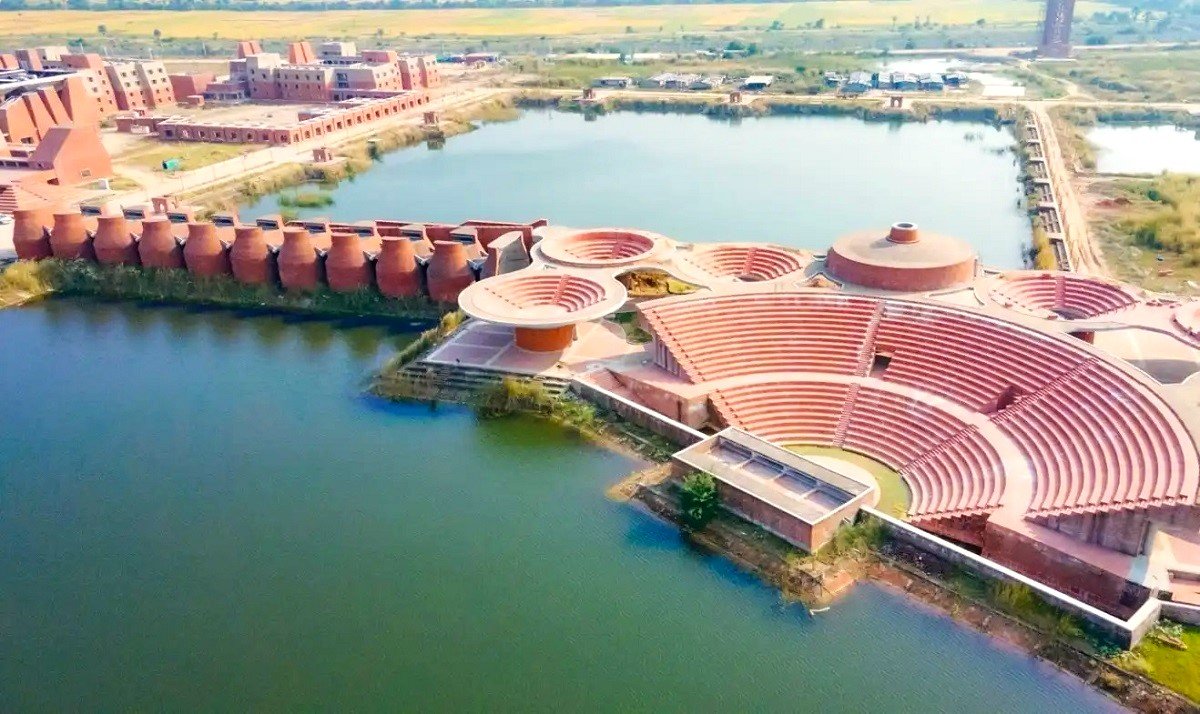 The programmes offered include Global PhD programme, MA in Historical Studies, MSc in Ecology and Environment Studies, MA in Buddhist Studies, Philosophy and Comparative Religions, MA in Hindu Studies, MA in World Literature, MA in International Relations and Peace Studies, MA in Archaeology and MBA in Sustainable Development and Management (MBA).
The programmes offered include Global PhD programme, MA in Historical Studies, MSc in Ecology and Environment Studies, MA in Buddhist Studies, Philosophy and Comparative Religions, MA in Hindu Studies, MA in World Literature, MA in International Relations and Peace Studies, MA in Archaeology and MBA in Sustainable Development and Management (MBA).
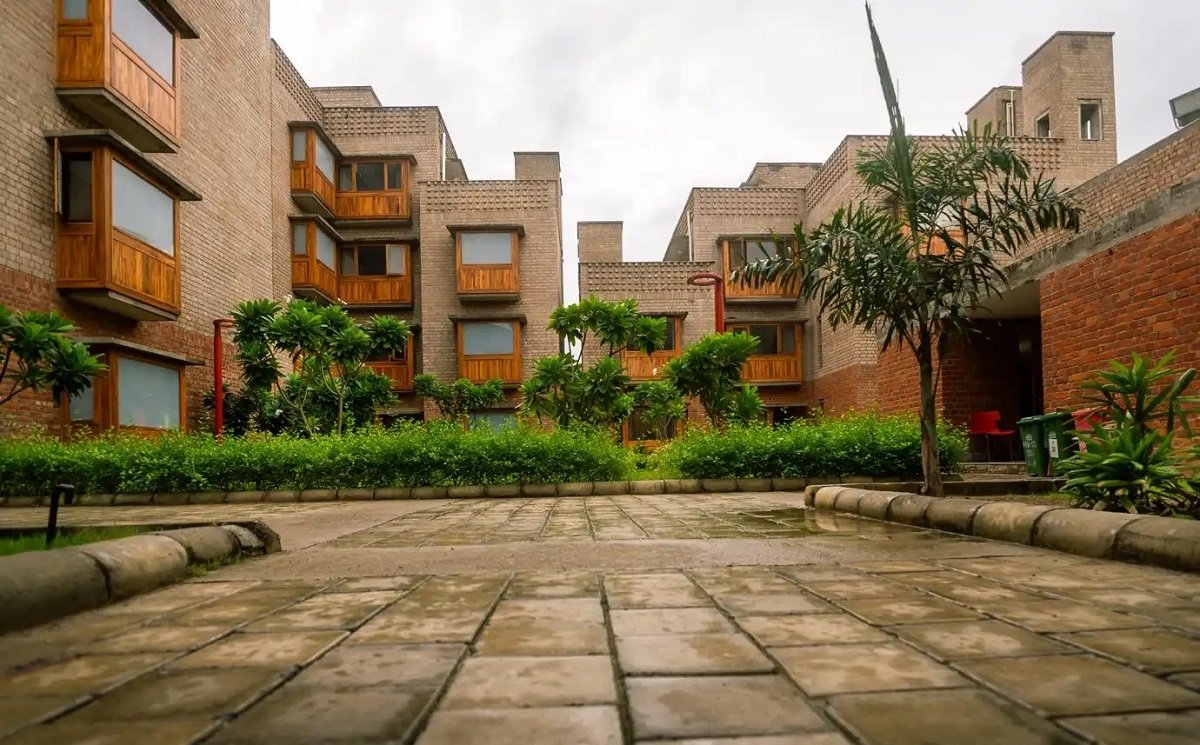 The university is also offering various short-term diploma and certificate programmes in Pali, Sanskrit, English, Korean, Yoga, Jain Studies, Greek Language and Heritage, and Persian Language and Heritage, etc.
The university is also offering various short-term diploma and certificate programmes in Pali, Sanskrit, English, Korean, Yoga, Jain Studies, Greek Language and Heritage, and Persian Language and Heritage, etc.
Revival to start golden era for India: PM
Speaking at the inauguration, Prime Minister Modi while emphasising that Nalanda is a symbol of Indian’s academic heritage and vibrant cultural exchange, expressed confidence that its revival is going to start another golden age for India.

Noting that Nalanda is not just a renaissance of India’s heritage, but the heritage of many other countries of the world, and Asia is linked to it, he reiterated his mission to once again make India the most prominent centre of education and knowledge for the world.
All programmes at the university emphasise collaborative research with students and faculty from affiliated universities and institutions, study abroad experience, and foreign language training. Students are expected to pursue interdisciplinary research, choose courses relevant to their research interests in other disciplines/Schools to enhance their research skills.
Collaborative research linkages
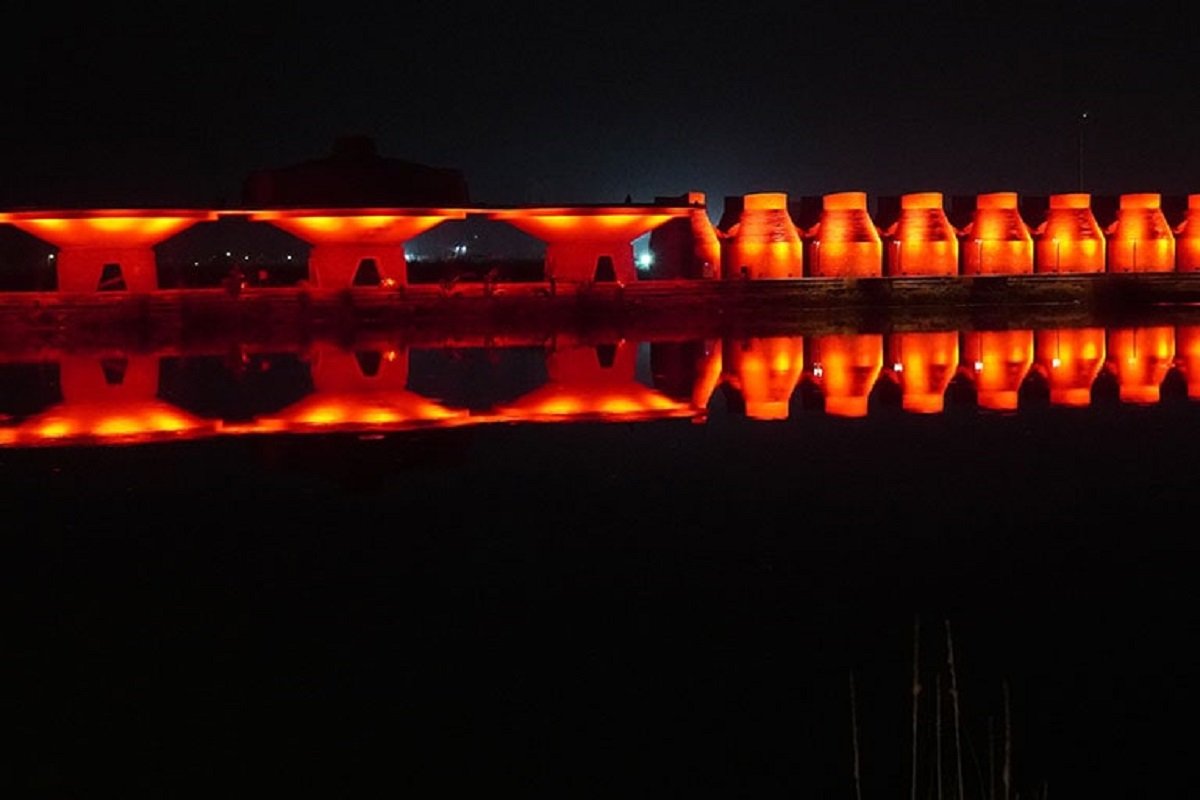 The international university, with a growing population of select students from across the world, especially Nalanda’s partner countries, and a first-rate faculty known for its scholarship, has also signed memoranda of understanding for collaborative research with other international universities like University of Ostrava (Czech Republic); University of Jambi (Indonesia); Dongguk University (South Korea); Otani University, Kyoto (Japan); Lumbini University (Nepal), Bronx Community College, City University of New York (USA); Kanazawa University (Japan); Universitas Sebelas Maret (Indonesia); and Deakin University (Australia).
The international university, with a growing population of select students from across the world, especially Nalanda’s partner countries, and a first-rate faculty known for its scholarship, has also signed memoranda of understanding for collaborative research with other international universities like University of Ostrava (Czech Republic); University of Jambi (Indonesia); Dongguk University (South Korea); Otani University, Kyoto (Japan); Lumbini University (Nepal), Bronx Community College, City University of New York (USA); Kanazawa University (Japan); Universitas Sebelas Maret (Indonesia); and Deakin University (Australia).
It has also established formal linkages for research activities with Indian and foreign institutions, including Indian Council of Cultural Research; Bay of Bengal Programme-Inter Governmental Organization (India), Indian Council of World Affairs; Indian Institute of Public Health, Gandhinagar; Bihar Heritage Development Society (India); CII-Sohrabji Godrej Green Business Centre (India); CSIR-National Environmental Engineering Research Institute (India); and The Academy of Korean Studies (South Korea).
Nodal institution for AINU network
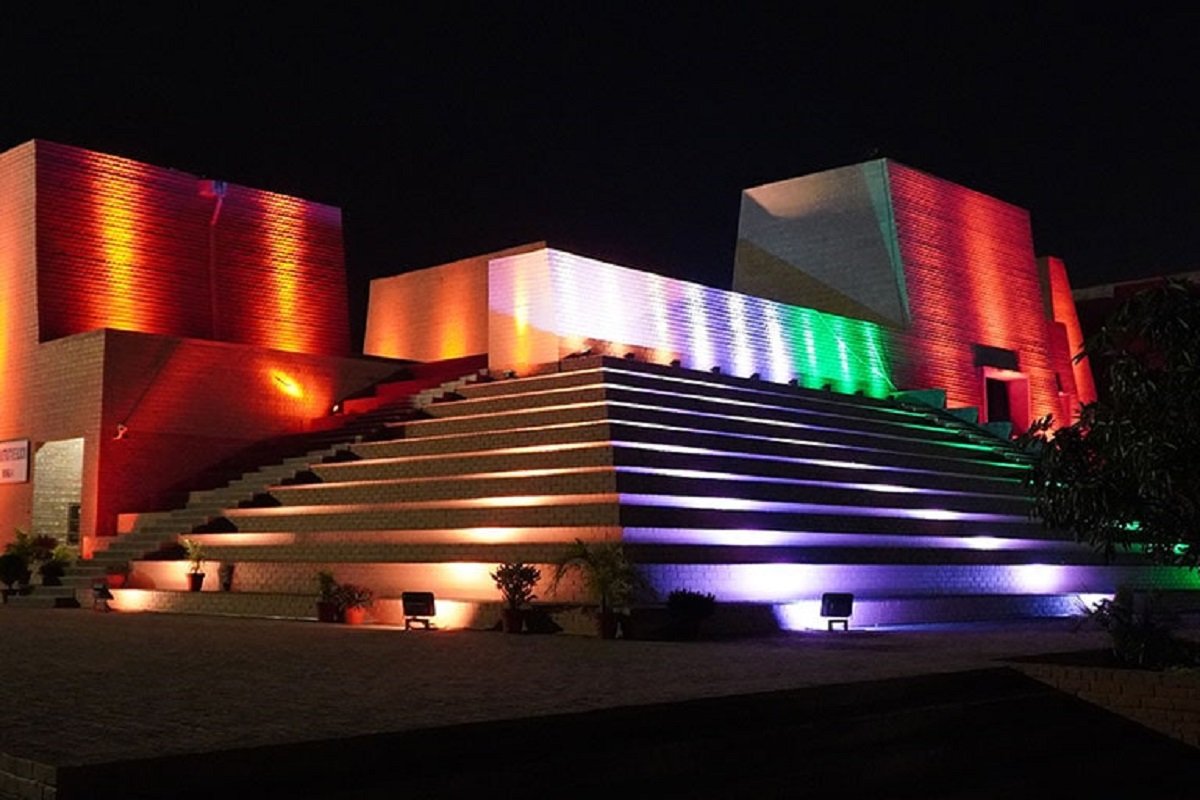 Besides, Nalanda University has also been designated as the nodal institution in the ASEAN-India Network of Universities (AINU), envisioned as the knowledge ecosystem forged through the linkages among the premier institutions and universities in India and ASEAN countries. The establishment of AINU was announced in January 2018 by Prime Minister Modi at the ASEAN-India Commemorative Summit in New Delhi, and it was launched in August 2022 at the ASEAN Headquarters in Jakarta, Indonesia.
Besides, Nalanda University has also been designated as the nodal institution in the ASEAN-India Network of Universities (AINU), envisioned as the knowledge ecosystem forged through the linkages among the premier institutions and universities in India and ASEAN countries. The establishment of AINU was announced in January 2018 by Prime Minister Modi at the ASEAN-India Commemorative Summit in New Delhi, and it was launched in August 2022 at the ASEAN Headquarters in Jakarta, Indonesia.
The network offers opportunities for knowledge sharing, including exchange of skills, competence, best practices and knowhow. The collaboration is expected to ensure capacity building and creation of regional thought leaders from the Asia-Pacific in the emerging multi-polar world through joint projects in faculty exchanges, doctoral student exchange and joint PhD research supervision or joint research.
The major fields AINU is expected to explore are Engineering, Science and Technology, Policy and Law-making, Trade and Investments, Peace and Security, Sustainable Development, Humanities, Religion, Cultural Intersections and Blue Economy.
Common Archival Resource Centre
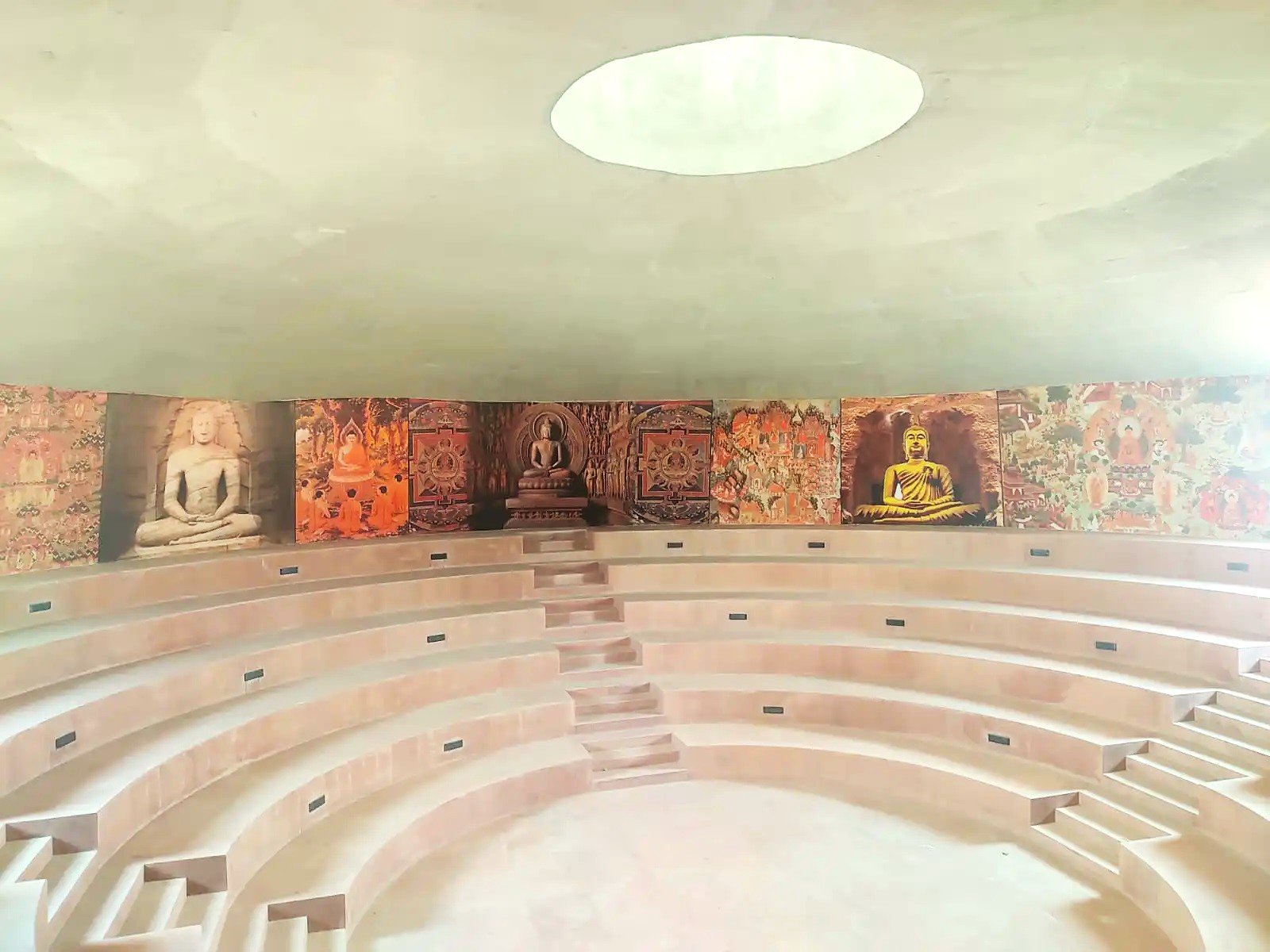 Nalanda University houses a Common Archival Resource Centre, envisaged in the Mekong-Ganga Cooperation (MGC) summit in 2015, which is a digital archive aimed at preserving and sharing Asia-related information and resources that highlight its history, material culture, trade networks, heritage, religious ideas and practices, oral and performative traditions, civilization, and Asian networks of interaction.
Nalanda University houses a Common Archival Resource Centre, envisaged in the Mekong-Ganga Cooperation (MGC) summit in 2015, which is a digital archive aimed at preserving and sharing Asia-related information and resources that highlight its history, material culture, trade networks, heritage, religious ideas and practices, oral and performative traditions, civilization, and Asian networks of interaction.
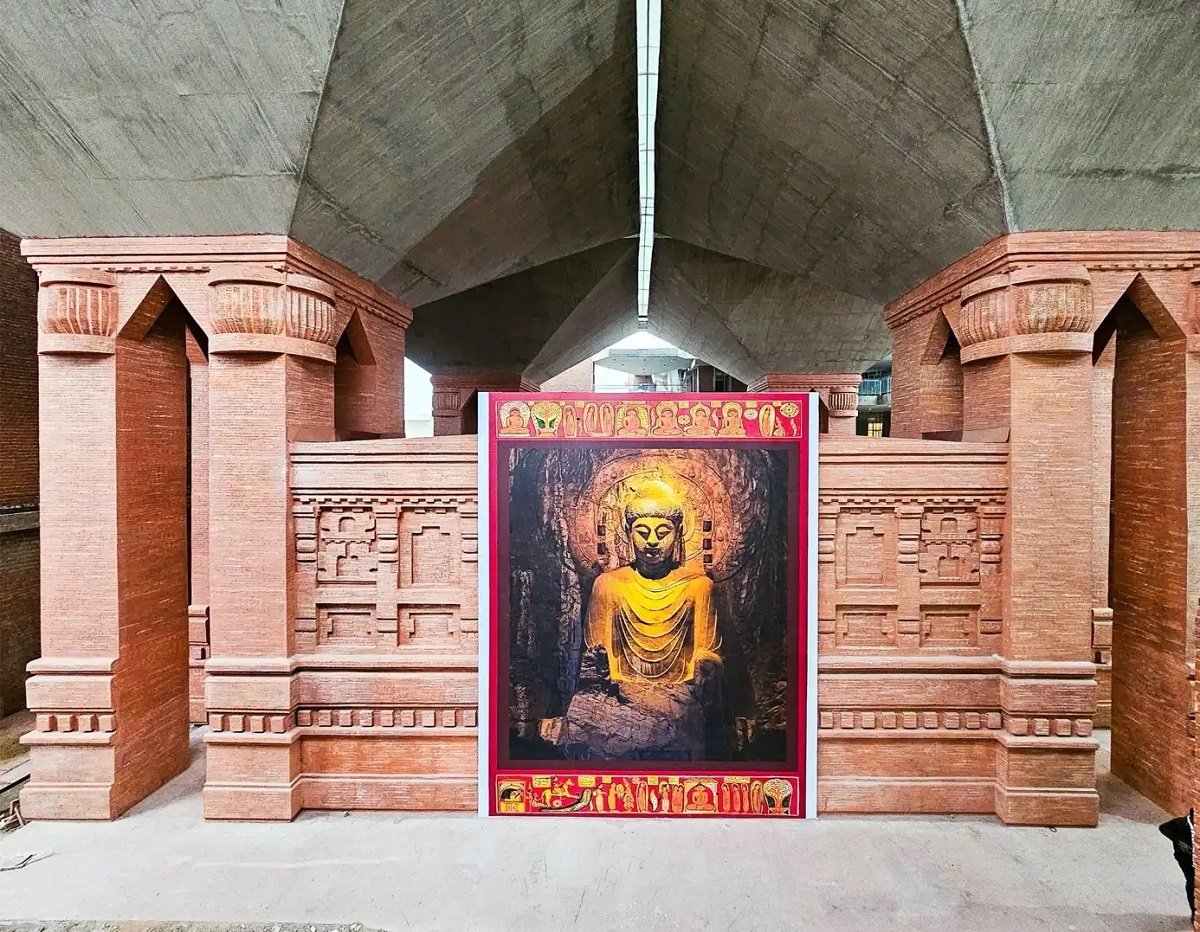 The new campus of Nalanda University, built at a cost of Rs 1700 crore, has two academic blocks with 40 classrooms. The campus accommodates seating for 1900 students. The university also features two auditoriums. Additionally, an International Centre and an amphitheatre have been constructed, with a capacity to seat 2000 people. Furthermore, there are faculty clubs and a sports complex for the students.
The new campus of Nalanda University, built at a cost of Rs 1700 crore, has two academic blocks with 40 classrooms. The campus accommodates seating for 1900 students. The university also features two auditoriums. Additionally, an International Centre and an amphitheatre have been constructed, with a capacity to seat 2000 people. Furthermore, there are faculty clubs and a sports complex for the students.
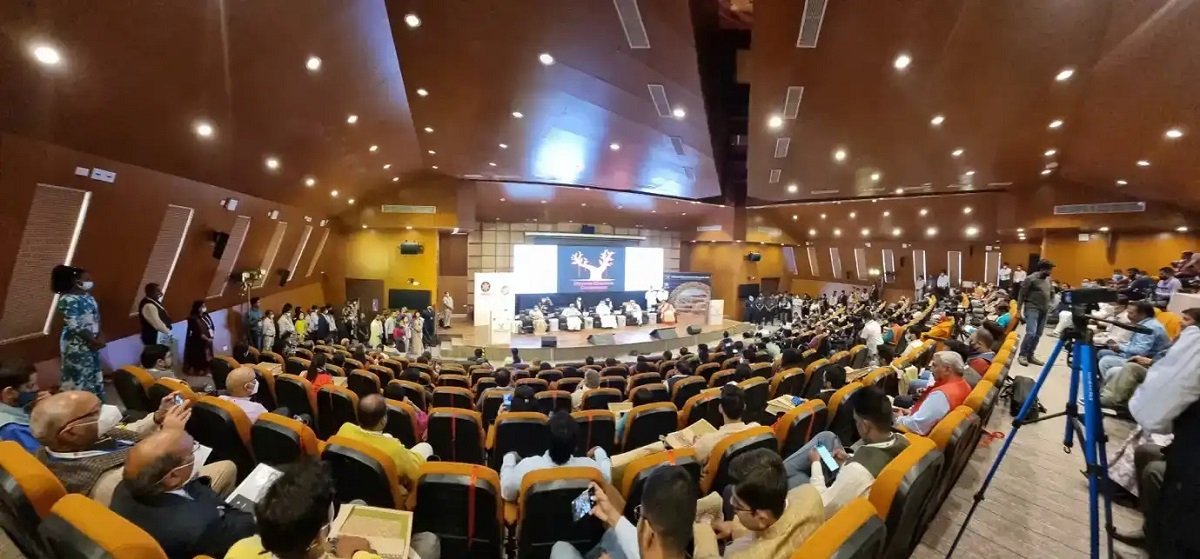
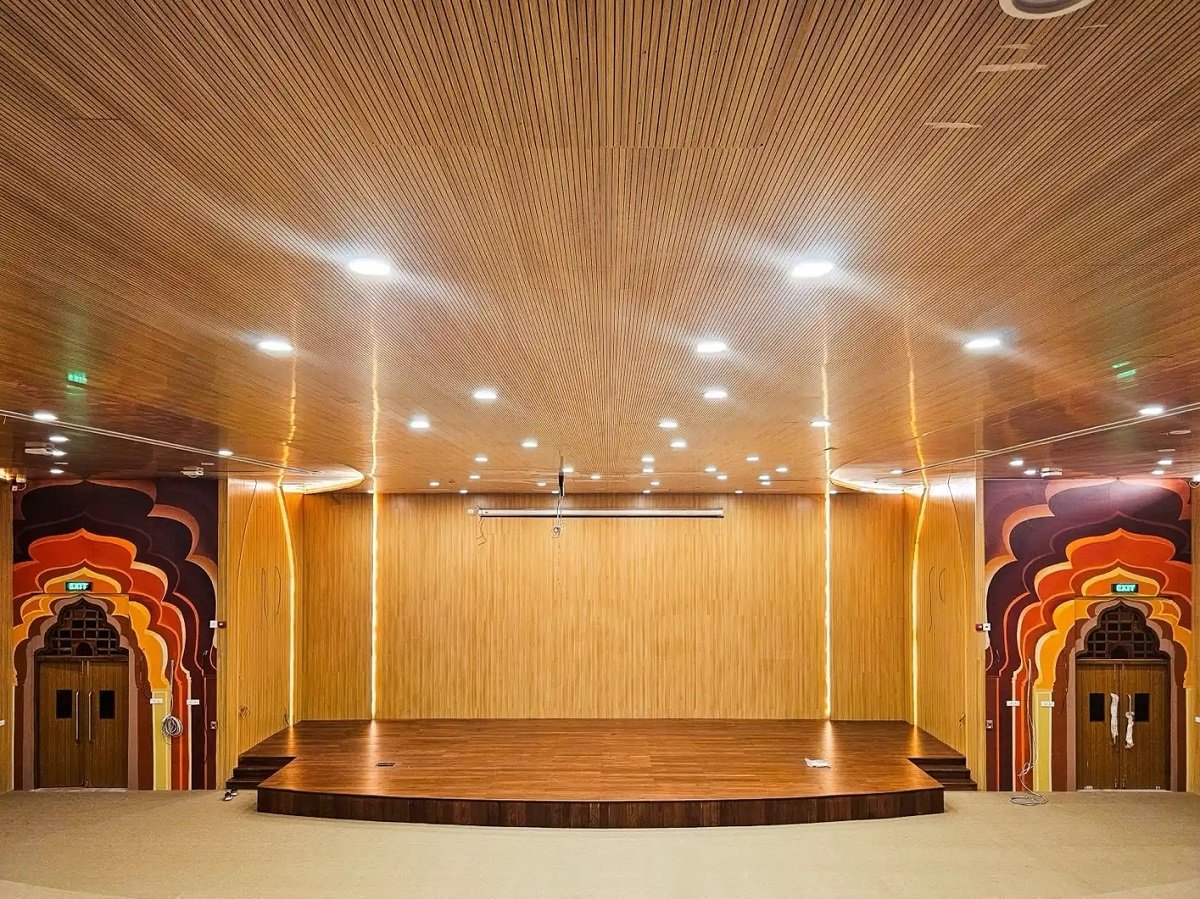 The University Library
The University Library
The Central Library’s six-storeyed Stupa shaped building, with a built-up area of 17,545 square meters, provides state-of-the-art facilities, houses contemplative spaces for studying, presentation and seminar rooms with access to video conferencing and podcasting facilities, art galleries, archival section and music room, cafés, student and faculty lounges, etc. Having an outer radius of 81 meters at base and the crowning height of 26 meters, the central library structure is probably the biggest stupa-shaped building in the world.
Open-air roundel theatres
The several open-air roundel theatres are used as pleasant spaces for lectures, discussions, enacting or demonstration. These environment-friendly open-to-sky spaces are purposeful, and often desirable for breaking the monotony and formalism of the regular classrooms and conducting engaging class-talks.
Net-zero features
The campus combines state-of-the-art technologies with planning principles of the ancient Nalanda to create a carbon-neutral and zero-waste campus. Some of the most important and indigenous aspects and palette of concepts for passive methods operating at different scales are 6.5 MW Solar PV captive power plant, 1.2 MW Biogas plant, Desiccant Evaporative (DEVAP) technology for cooling/heating of the buildings and Solar integrated thermal storage technology for HVAC (heating, ventilation and air conditioning) system.
Apart from this, the new campus features the use of Compressed Stabilized Earth Blocks (CSEB) instead of kiln burnt clay bricks, thick cavity walls to increase thermal resistance, Decentralized Water Treatment (DeWAT) systems, cooling and cleaning of the air through use of selected native plants, climate appropriate landscape design to reduce potable water demand, and application of Building Management System, etc.
40 hectares of Waterbodies
The 455-acre eco-friendly, green, carbon neutral, sustainable campus, providing modern and state-of-the-art amenities and comforts, is commensurate with its international stature. The master plan and structural architecture follow the pathways of sustainability and emphasize upon environmental sensitivity at all levels. Net-zero energy, net-zero emission, net-zero water and net-zero waste have been achieved and sustained.
Separately, with a view to conserving the topsoil for horticulture, several ponds have been excavated on the campus to create 100 acres of water bodies, which were filled with rainwater through an indigenous water management system of ‘ahar-pyne’ network.
Location: The new campus at Rajgir, in Nalanda district, is about 90 kilometres from Bihar’s state capital Patna and approximately 12 kilometres south of Bihar Sharif.
Nalanda University Chancellor: Prof. Arvind Panagariya, well known professor of economics, Chairman of the 16th Finance Commission, first Vice Chairman of Niti Aayog
https://nalandauniv.edu.in/admissions/

